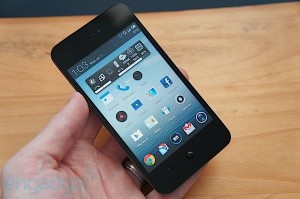The Samsung Galaxy S III and HTC One X are the heavyweights slugging it out in the main event of this year’s flagship wars. These are quad-core behemoths, along with the LG Optimus 4X HD, that instantly come to people’s minds when they think about the best smartphones on the market today. There is, however, another quad-core contender that isn’t as popular: the Meizu MX 4-core.
First off, if you know about the original Meizu MX, you know that this is practically the same device, only with 2 more cores thrown in (hence the name). Here are some key specs for this smartphone:
• 1.4 GHz quad-core processor (Cortex-A9 with a Mali-400MP GPU, 1 GB of RAM, and Exynos 4212 Quad)
• 4-inch capacitive touchscreen with Gorilla Glass finish and 640×960 screen resolution
• 8 MP camera (autofocus, wide angle, LED Flash, 1080p video recording capability)
• 32 or 64GB of internal memory
Performance and User Interface
The MX 4-core is very competent as far as quad-core phones go. Unfortunately, the performance of the device and the overall experience of the user are both hampered by a bunch of bugs. The Flyme OS skin on top of Android 4.0 isn’t all that polished, and it affects the way the phone handles common tasks the way one might be used to on other Android devices. It’s plain to see the influences behind Flyme: it’s a halfway cross between Android’s OS and Apple’s iOS. Sure, you can still add widgets or shortcuts to your favorite or frequently used apps, but so far the OS doesn’t even provide an app drawer. Instead, you place your apps around the home screens (up to 12) along with the widgets. Of course, you can always use a third-party launcher so you’ll still be able to put your Temple Run or RingCentral app icons in familiar spots.
As far as benchmarks are concerned, the MX 4-core doesn’t really disappoint. You’ll be surprised that the 4-core can outperform the Galaxy S III in certain benchmark tests, although it still falls short in terms of competing with Krait-running devices like the HTC One S. Meizu has really been able to optimize the hardware setup of the 4-core to produce exceptional results.
Design
The Meizu MX and this quad-core successor are undoubtedly iPhone clones. It’s not really the ideal situation for a smartphone that wants to be seen as a serious contender for the best of the best and may not be the best approach considering the recent patent wars Apple has waged against other smartphone manufacturers.
What’s not copied from Apple is build quality. The plastic construction, plus the overall glossiness of the product, cheapens the feel in the hand, and the screen and back are both fingerprint magnets. The phone has a compact build, though, so this might be a plus for people looking for a powerful device that isn’t huge like the S III or the One X. Then again, you don’t get the epic screen real estate found in those leading flagships, and the lower resolution also contributes to a less-than-stellar experience with the smartphone.
Other Features
The MX 4-core sports an 8-megapixel camera with an LED flash and 1080p video recording. The quality is decent enough, and you’ll find it a joy to browse through your photos using the refreshed gallery provided by the manufacturer.
As for connectivity, you get the kind of full suite you would expect from a flagship. There’s Wi-Fi b/g/n support, HSUPA and HSDPA, BlueTooth, and MHL via the microUSB slot.
Consuming multimedia is smooth on the MX 4-core. The video player can handle practically any format and in 720p HD, although it won’t detect every video file on your phone automatically. You have to put the files in a certain folder. Plus, the resolution and aspect ratio isn’t optimal for today’s widescreen clips.
Audio quality is a big plus point for the MX 4-core, and this only enhances the multimedia experience. The music player is adequate, although it has the same drawback of not being able to detect music files not stored in the specified folder.
The 1700 mAh Li-Ion battery, unfortunately, is not adequate for all the raw power of the MX 4-core. This is one knock that really pushes the 4-core off the podium of quad-core contenders.
All things considered, the Meizu MX 4-core is a potent flagship, a capable upstart that can go toe-to-toe with the likes of the S III. It’s also got an attractive price point, so people who aren’t too concerned about brands or flash or build quality or the fact that it looks like an iPhone clone really will appreciate this device.
